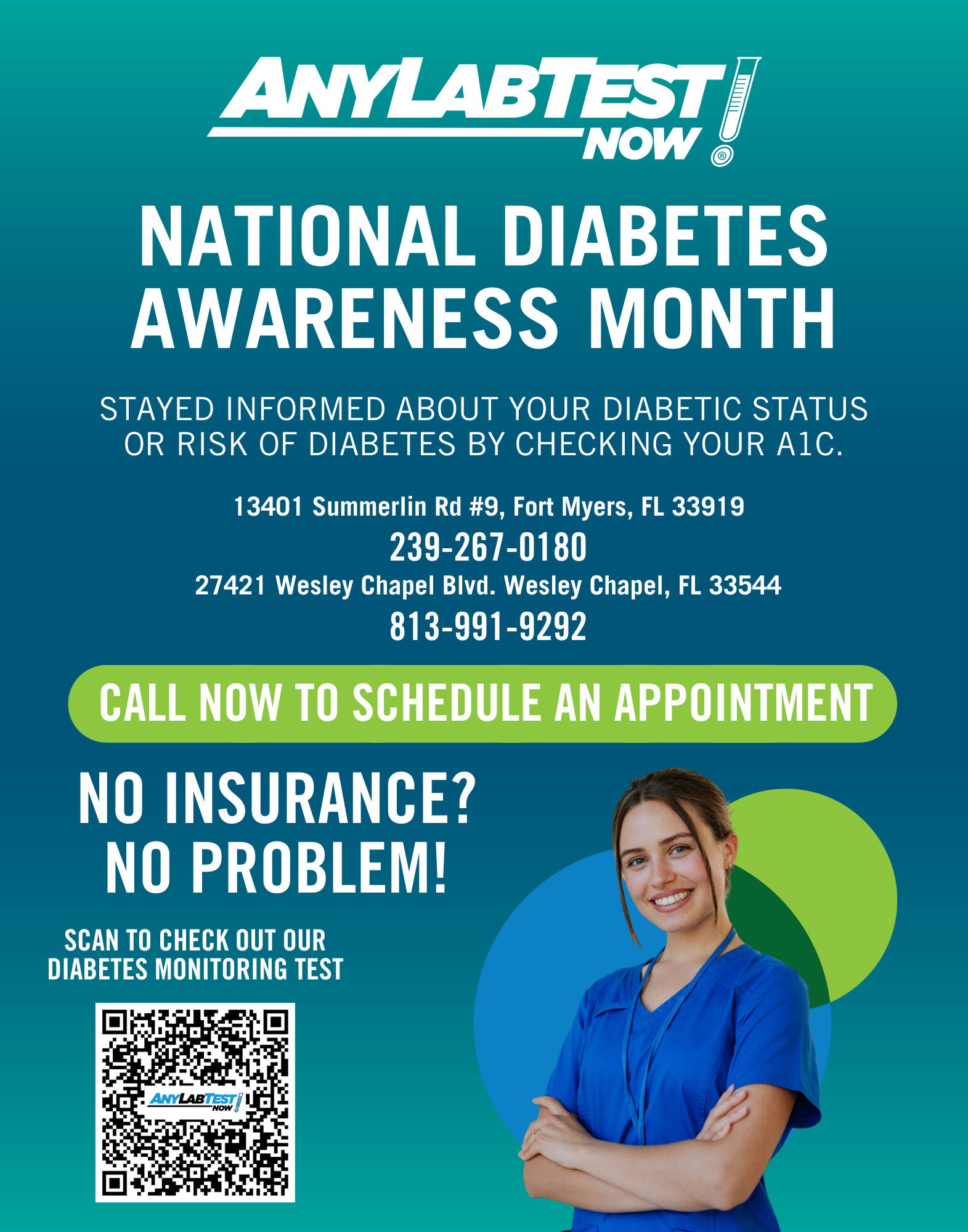
3 minute read
Understanding Diabetes: The Chronic Condition That Can Strike at Any Age.
About one out of every ten people have diabetes. However, one out of every five of those people do not realize they have this potentially deadly condition. In fact, diabetes is the seventh leading cause of death in the United States.
To educate people about the disease, November is designated Diabetes Awareness Month. Diabetes can strike anyone, at any age.
Let’s start with the basics. What exactly is diabetes?
Diabetes is a chronic health condition that causes higher than average blood sugar levels. Normally, your body produces insulin from the pancreas to help regulate the blood sugar. Insulin acts like a key to open your cells to allow the blood sugar to enter so you can use it for energy. If you have diabetes, your pancreas either doesn’t make enough insulin or cannot effectively use its own insulin.
There are two main forms of diabetes, with very different causes, symptoms and treatments.
Type 1 Diabetes
Type 1 diabetes is an auto-immune disease, and while there are treatments to manage it, there is no cure. About 5 percent of people who have diabetes have type 1 diabetes — or insulin-dependent diabetes. In the past, type 1 diabetes was called juvenile diabetes, because patients often found out they had it during childhood, but people of all ages can develop type 1 diabetes.
In type 1 diabetes, the pancreas produces no insulin. The reason? The body’s immune system attacks the insulin-producing islet cells in the pancreas. The islet cells sense glucose in the blood and produce the right amount of insulin to normalize blood sugars. Once the insulin-producing cells are destroyed, a person can no longer produce their own insulin. Without insulin, sugar stays in the blood and builds up.
Complications Of Type 1 Diabetes
If left untreated, high blood sugar levels can cause health complications and internal damage.
Blindness is a common diabetes complication. Diabetes is also a leading cause of kidney failure. Many people with diabetes have impaired sensation in the hands and feet, including neuropathy.
Diabetes can also cause digestive problems, erectile dysfunction, and fertility issues. The conditions also increase the risk of high blood pressure, heart disease, and stroke. Diabetes can also lead to amputation of toes and feet. In extreme cases, it can also lead to coma and death.
Signs Of Type 1 Diabetes
Symptoms of type 1 diabetes often appear suddenly. The most common symptoms are:
•Increased thirst •Increased urination •Rapid and unexplained weight loss
•Bed-wetting may occur in children who have already been toilet trained
•Extreme hunger •Extreme weakness or fatigue •Unusual irritability
•Blurred vision •Nausea, vomiting, and abdominal pain
•Fruity breath odor
Treatment Of Type 1 Diabetes
Type 1 diabetes is treated by taking daily insulin injections or using an insulin pump or other device to replace the insulin no longer created naturally. A healthy diet and regular exercise can also help control blood sugar levels.
If you take too much insulin, then your blood sugar can drop to a dangerously low level. This is called hypoglycemia, and it can be life-threatening. If you take too little insulin, your blood sugar can rise to a dangerously high level. Your cells are not getting the sugar, or energy, they need. This is called hyperglycemia.
You will work with your doctor to determine the proper insulin dose and delivery method.










